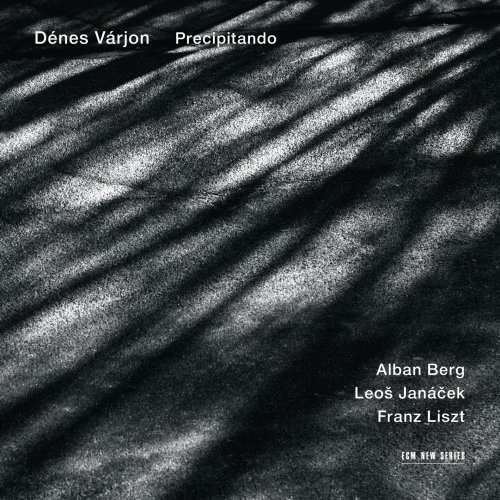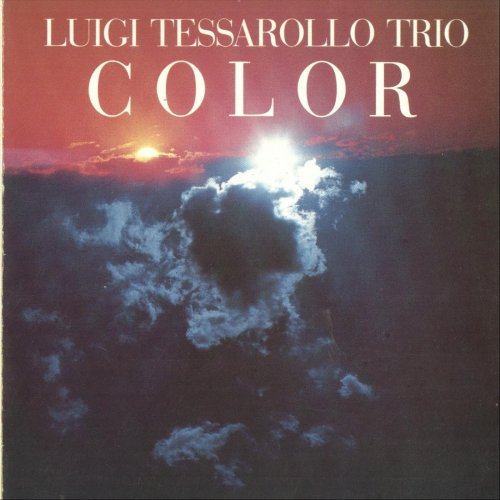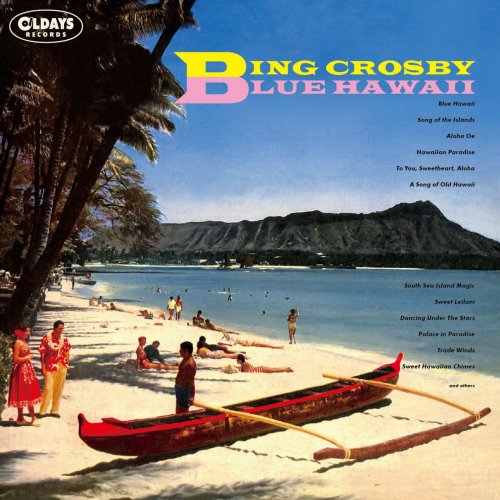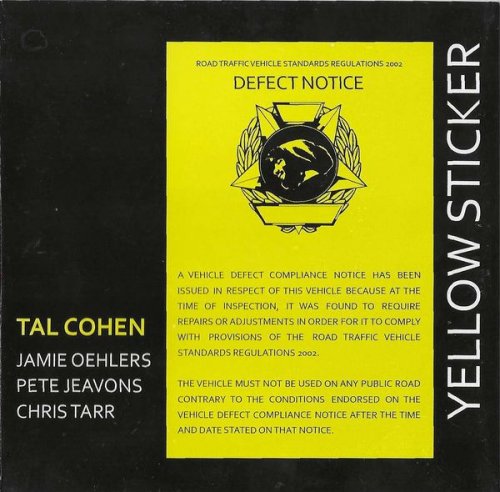Dénes Várjon - Berg, Janácek, Liszt: Precipitando (2012) [Hi-Res]

Artist: Dénes Várjon
Title: Berg, Janácek, Liszt: Precipitando
Year Of Release: 2012
Label: ECM New Series
Genre: Classical
Quality: FLAC (tracks) / 24bit-44.1kHz FLAC (tracks+booklet)
Total Time: 57:42
Total Size: 167 / 317 MB
WebSite: Album Preview
Tracklist:Title: Berg, Janácek, Liszt: Precipitando
Year Of Release: 2012
Label: ECM New Series
Genre: Classical
Quality: FLAC (tracks) / 24bit-44.1kHz FLAC (tracks+booklet)
Total Time: 57:42
Total Size: 167 / 317 MB
WebSite: Album Preview
01. Mässig bewegt - Langsames Tempo - Quasi Adagio (11:03)
02. Andante (3:28)
03. Molto adagio (5:08)
04. Andantino (2:57)
05. Presto (4:14)
06. Liszt: Piano Sonata In B Minor, S.178 (31:10)
After important contributions to Heinz Holliger’s “Romancendres” and acclaimed performance, with Carolin Widmann, of Schumann’s Violin Sonatas, here is the first New Series solo recording from Hungarian pianist Dénes Várjon. It is a recital that draws the listener in from the first moments – beginning with the dark, brooding language of Alban’s Berg’s Piano Sonata Op. 1, shaped in the shadow of Schoenberg, and continuing into the nebulous regions of Janáèek’s impressionistic and near-contemporaneous “In the mists”, finally emerging into the clear light of Liszt’s immense - and immensely-influential - B-minor Sonata.
“Perhaps it is the lustre of Dénes Várjon’s playing that lifts everything he performs here into a state of newness, of beginning, and thereby directs our attention to how, in all this music, beginnings are crucial and, once made, decisive.” So begins Paul Griffiths’s liner note for the first solo recital recording by Dénes Várjon. It is a recording that brings the music of Franz Liszt into juxtaposition with work of two composers inspired by him. As Várjon says, “It is always highly interesting to find connections between composers, and bridges between epochs in musical history. In the mirror of other composers and periods, I begin to see new dimensions of works which I have performed, and this is especially the case when I play pieces by Ferenc Liszt.”
For Várjon, the importance of Liszt transcends the piano and his vision of its possibilities. “Even more strongly, I see him as a main figure of the current of music history. There are certain works by him I need to play and explore again and again - especially his enigmatic late piano pieces, including the four Valses oubliées and the Mephisto Waltzes, the A major piano concerto and, most importantly, his B minor Sonata. I feel the Sonata is a most essential and pure manifestation of the art of Ferenc Liszt. For all its rich texture, its great structure and its length, there is not one single note which is not a most important part of the whole.”
Playing Liszt in context with Berg’s Piano Sonata and Janáèek’s “In the mists” offers further insights. “I hear of course the echo from Liszt's music in Berg and Janáèek but even more I realize, through the latter composers, the new and the modern in Liszt's work. The harmonic world of Alban Berg opens the ears to all the innovative solutions of Liszt, and the one movement shape of the Berg Sonata gives new perspectives on just how modern it was in Liszt's time to compose a piece like his B minor sonata. I also don't see it as a contradiction that while I hear the modern side of Liszt, the Berg opus 1 is also a very romantic piece for me.” Written around 1907, while Berg was under Schönberg’s tutelage the piece is also indebted to Mahler and Debussy as well as to Liszt. Paul Griffiths points to similarities between the Berg sonata and Janáèek’s “In the mists” of 1912: “the influence of Debussy, the extending but not breaking of tonal harmony, the motivic consistency, the constantly vocal utterance ….”
“the luminous playing of the opening of Berg's Sonata Op. 1 tells us this is a pianist of rare sensitivity...Varjon's probing approach reveals the finest shades of harmonic colouring and places more emphasis on the work's preludial character than most accounts...All in all, a very impressive and intelligently planned programme.” (BBC Music Magazine)
Dénes Várjon, piano
Award: BBC Music Magazine, Instrumental Choice - April 2012
“Perhaps it is the lustre of Dénes Várjon’s playing that lifts everything he performs here into a state of newness, of beginning, and thereby directs our attention to how, in all this music, beginnings are crucial and, once made, decisive.” So begins Paul Griffiths’s liner note for the first solo recital recording by Dénes Várjon. It is a recording that brings the music of Franz Liszt into juxtaposition with work of two composers inspired by him. As Várjon says, “It is always highly interesting to find connections between composers, and bridges between epochs in musical history. In the mirror of other composers and periods, I begin to see new dimensions of works which I have performed, and this is especially the case when I play pieces by Ferenc Liszt.”
For Várjon, the importance of Liszt transcends the piano and his vision of its possibilities. “Even more strongly, I see him as a main figure of the current of music history. There are certain works by him I need to play and explore again and again - especially his enigmatic late piano pieces, including the four Valses oubliées and the Mephisto Waltzes, the A major piano concerto and, most importantly, his B minor Sonata. I feel the Sonata is a most essential and pure manifestation of the art of Ferenc Liszt. For all its rich texture, its great structure and its length, there is not one single note which is not a most important part of the whole.”
Playing Liszt in context with Berg’s Piano Sonata and Janáèek’s “In the mists” offers further insights. “I hear of course the echo from Liszt's music in Berg and Janáèek but even more I realize, through the latter composers, the new and the modern in Liszt's work. The harmonic world of Alban Berg opens the ears to all the innovative solutions of Liszt, and the one movement shape of the Berg Sonata gives new perspectives on just how modern it was in Liszt's time to compose a piece like his B minor sonata. I also don't see it as a contradiction that while I hear the modern side of Liszt, the Berg opus 1 is also a very romantic piece for me.” Written around 1907, while Berg was under Schönberg’s tutelage the piece is also indebted to Mahler and Debussy as well as to Liszt. Paul Griffiths points to similarities between the Berg sonata and Janáèek’s “In the mists” of 1912: “the influence of Debussy, the extending but not breaking of tonal harmony, the motivic consistency, the constantly vocal utterance ….”
“the luminous playing of the opening of Berg's Sonata Op. 1 tells us this is a pianist of rare sensitivity...Varjon's probing approach reveals the finest shades of harmonic colouring and places more emphasis on the work's preludial character than most accounts...All in all, a very impressive and intelligently planned programme.” (BBC Music Magazine)
Dénes Várjon, piano
Award: BBC Music Magazine, Instrumental Choice - April 2012
Download Link Isra.Cloud
Dénes Varjon - Precipitando FLAC.rar - 167.2 MB
Dénes Varjon - Precipitando Hi-Res.rar - 317.9 MB
Dénes Varjon - Precipitando FLAC.rar - 167.2 MB
Dénes Varjon - Precipitando Hi-Res.rar - 317.9 MB



![NYO Jazz - Live in Johannesburg (Live) (2025) [Hi-Res] NYO Jazz - Live in Johannesburg (Live) (2025) [Hi-Res]](https://www.dibpic.com/uploads/posts/2025-12/1765894703_zwp14vk90corb_600.jpg)




